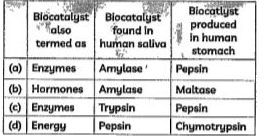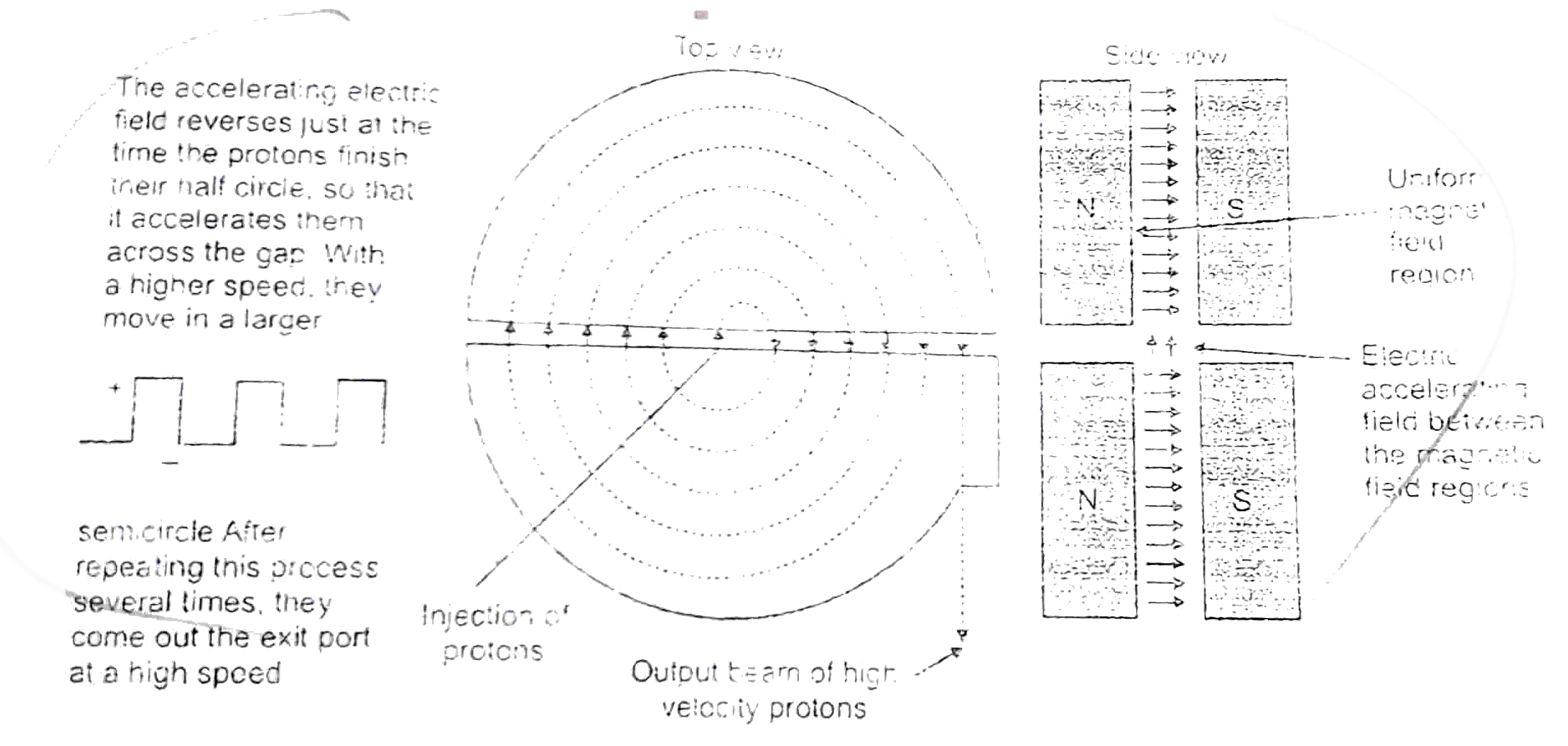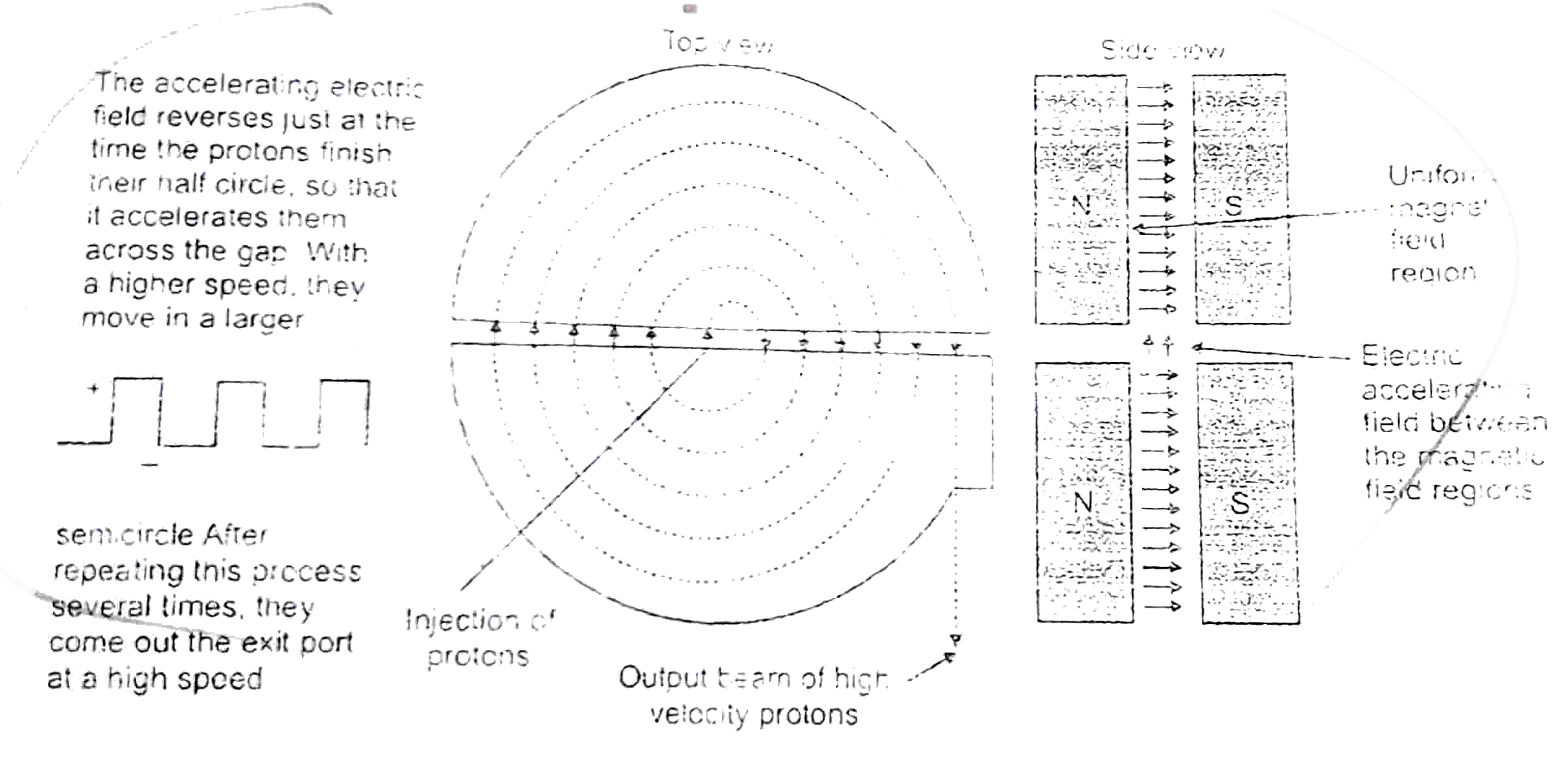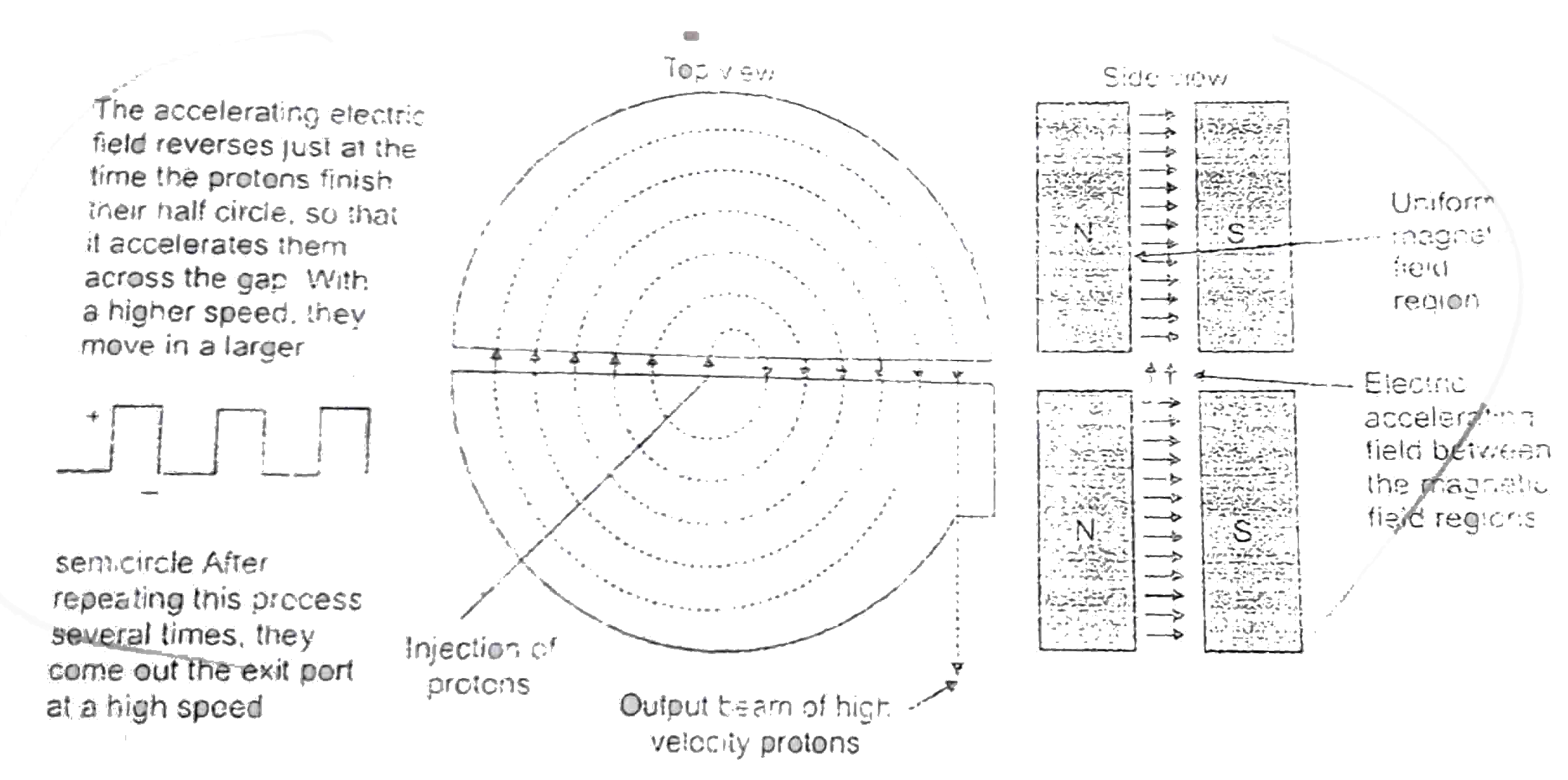Glucose is the prime source of emergency in our body. However, it is stored in the form of glycogen in the muscle and liver of animal and in the form of starch in plants. As a result, everytime a cell requires glucose, it must hydrolyze glycogen which is an energy consuming process. Why does the cell store glycogen instead of glucose in free form?
Glycogen is more compact and more hydro philic.
Storage of glucose in free form will consume more ATP.
Glucose in the free form creates more osmoticm pressure.
Glucose is highly reactive molecule hence stor ing in the free form can result in unwanted re actions in the cells.
The correct Answer is:C
Step-by-Step Solution:
1. Understanding the Role of Glucose:
- Glucose is a simple sugar and serves as the primary source of energy for cells in the body. It is crucial for cellular respiration, which produces ATP (adenosine triphosphate), the energy currency of the cell.
2. Storage Forms of Glucose:
- In animals, glucose is stored as glycogen, primarily in the liver and muscle tissues. In plants, glucose is stored as starch. Both glycogen and starch are polysaccharides, which are long chains of glucose molecules.
3. Why Store as Glycogen Instead of Free Glucose:
- Osmotic Pressure: If glucose were stored in its free form, it would create a high concentration of solute in the cells. This would lead to an influx of water into the cells due to osmosis, potentially causing them to swell and burst. Storing glucose as glycogen reduces this osmotic pressure because glycogen is a large molecule and does not contribute significantly to the solute concentration in the cell.
4. Energy Efficiency:
- Hydrolyzing glycogen to release glucose is a controlled process that allows the body to manage energy release according to its needs. Glycogen can be rapidly broken down into glucose when energy is required, making it an efficient storage form.
5. Quick Availability:
- Glycogen can be quickly mobilized to meet sudden energy demands, such as during intense physical activity. The process of breaking down glycogen (glycogenolysis) can be initiated rapidly, providing a quick source of glucose.
6. Regulation of Blood Sugar Levels:
- Storing glucose as glycogen helps in maintaining stable blood sugar levels. The liver can release glucose into the bloodstream as needed, preventing spikes and drops in blood sugar levels.
7. Conclusion:
- Storing glucose as glycogen instead of in free form is a strategy that helps maintain osmotic balance, provides a quick energy source, and regulates blood glucose levels effectively.
---
- Glucose is a simple sugar and serves as the primary source of energy for cells in the body. It is crucial for cellular respiration, which produces ATP (adenosine triphosphate), the energy currency of the cell.
- In animals, glucose is stored as glycogen, primarily in the liver and muscle tissues. In plants, glucose is stored as starch. Both glycogen and starch are polysaccharides, which are long chains of glucose molecules.
- Osmotic Pressure: If glucose were stored in its free form, it would create a high concentration of solute in the cells. This would lead to an influx of water into the cells due to osmosis, potentially causing them to swell and burst. Storing glucose as glycogen reduces this osmotic pressure because glycogen is a large molecule and does not contribute significantly to the solute concentration in the cell.
- Hydrolyzing glycogen to release glucose is a controlled process that allows the body to manage energy release according to its needs. Glycogen can be rapidly broken down into glucose when energy is required, making it an efficient storage form.
- Glycogen can be quickly mobilized to meet sudden energy demands, such as during intense physical activity. The process of breaking down glycogen (glycogenolysis) can be initiated rapidly, providing a quick source of glucose.
- Storing glucose as glycogen helps in maintaining stable blood sugar levels. The liver can release glucose into the bloodstream as needed, preventing spikes and drops in blood sugar levels.
- Storing glucose as glycogen instead of in free form is a strategy that helps maintain osmotic balance, provides a quick energy source, and regulates blood glucose levels effectively.
Topper's Solved these Questions
- NTSE 2019 - 20 BOOK - OSWAL PUBLICATIONCHAPTER - NTSE 2019 - 20 EXERCISE - (BIOLOGY) REPRODUCTION IN ORGANISMS (STAGE - 1)
3 Videos
- NTSE 2019 - 20 BOOK - OSWAL PUBLICATIONCHAPTER - NTSE 2019 - 20 EXERCISE - (BIOLOGY) REPRODUCTION IN ORGANISMS (STAGE - 2)
1 Videos
- NTSE 2019 - 20 BOOK - OSWAL PUBLICATIONCHAPTER - NTSE 2019 - 20 EXERCISE - (BIOLOGY) LIFE PROCESS (STAGE - 1)
4 Videos
- NEW CHAPTERS AND QUESTIONS BASED ON LATEST TYPOLOGIES INTRODUCED BY CBSE FOR 2021-22 EXAMINATION BOOK - OSWAL PUBLICATIONCHAPTER - NEW CHAPTERS AND QUESTIONS BASED ON LATEST TYPOLOGIES INTRODUCED BY CBSE FOR 2021-22 EXAMINATION EXERCISE - CONTROL AND COORDINATION (VISUAL CASE-BASED)
10 Videos
- OLYMPIAD 2019 - 20BOOK - OSWAL PUBLICATIONCHAPTER - OLYMPIAD 2019 - 20EXERCISE - BIOLOGY QUESTIONS (Why Do We Fall III)
1 Videos
Similar Questions
Photosynthesis is the process by which autotrophs take in susbstances from the outside and convert take insubstances from the outside and convert them into stored formes of energy .the materials is taken in the form of carbon dioxide and water which is converted into carbohydrates in the presence of sunlight chlorophyll . The carbohydrates which are not used immediately are stores in the form of starch , which serves as the internal energy reserve to be used as and when required by the plant . The complex substances have to be broken down into simpler ones before they can be used for the unkeep and growth of the body .
Heterotrophs depend for energy on :
View SolutionPhotosynthesis is the process by which autotrophs take in susbstances from the outside and convert take insubstances from the outside and convert them into stored formes of energy .the materials is taken in the form of carbon dioxide and water which is converted into carbohydrates in the presence of sunlight chlorophyll . The carbohydrates which are not used immediately are stores in the form of starch , which serves as the internal energy reserve to be used as and when required by the plant . The complex substances have to be broken down into simpler ones before they can be used for the unkeep and growth of the body .
Choose the correct combination of plots provided in the following table .

View Solution
Knowledge Check
Read the passage given below and answer the question:
Polysaccharides may be very large molecules. Starch, glycogen, cellulose, and chitin are examples of polysaccharides.
Starch is the stored form of sugars in plants and is made up of amylose and amylopectin (both polymers of glucose). Amylose is soluble in water and can be hydrolyzed into glucose units breaking glycocidic bonds, by the enzymes a- amylase and B-amylase. It is straight chain polymer. Amylopectin is a branched chain polymer of several D-glucose molecules. 80% of amylopectin is present in starch. Plants are able to synthesize glucose, and the excess glucose is stored as starch in different plant parts, including roots and seeds. The starch that is consumed by animals is broken down into smaller molecules, such as glucose. The cells can then absorb the glucose.
Glycogen is the storage form of glucose in humans and other vertebrates, and is made up of monomers of glucose. It is structurally quite similar to amylopectin. Glycogen is the animal equivalent of starch. It is stored in liver and skeletal muscles.
Cellulose is one of the most abundant natural biopolymers. The cell walls of plants are mostly made of cellulose, which provides structural support to the cell. Wood and paper are mostly cellulosic in nature.
Like amylose, cellulose is a linear polymer of glucose. Cellulose is made up of glucose monomers that are linked by bonds between particular carbon atoms in the glucose molecule.Every other glucose monomer in cellulose is flipped over and packed tightly as extended long chains. This gives cellulose its rigidity and high tensile strength-which is so important to plant cells. Cellulose passing through our digestive system is called dietary fiber.
(Source: https://chem.libretexts.org)
In animals, Glycogen is stored in :ALiverBSpleenCLungsDSmall IntestineRead the passage given below and answer the question:
Polysaccharides may be very large molecules. Starch, glycogen, cellulose, and chitin are examples of polysaccharides.
Starch is the stored form of sugars in plants and is made up of amylose and amylopectin (both polymers of glucose). Amylose is soluble in water and can be hydrolyzed into glucose units breaking glycocidic bonds, by the enzymes a- amylase and B-amylase. It is straight chain polymer. Amylopectin is a branched chain polymer of several D-glucose molecules. 80% of amylopectin is present in starch. Plants are able to synthesize glucose, and the excess glucose is stored as starch in different plant parts, including roots and seeds. The starch that is consumed by animals is broken down into smaller molecules, such as glucose. The cells can then absorb the glucose.
Glycogen is the storage form of glucose in humans and other vertebrates, and is made up of monomers of glucose. It is structurally quite similar to amylopectin. Glycogen is the animal equivalent of starch. It is stored in liver and skeletal muscles.
Cellulose is one of the most abundant natural biopolymers. The cell walls of plants are mostly made of cellulose, which provides structural support to the cell. Wood and paper are mostly cellulosic in nature.
Like amylose, cellulose is a linear polymer of glucose. Cellulose is made up of glucose monomers that are linked by bonds between particular carbon atoms in the glucose molecule.Every other glucose monomer in cellulose is flipped over and packed tightly as extended long chains. This gives cellulose its rigidity and high tensile strength-which is so important to plant cells. Cellulose passing through our digestive system is called dietary fiber.
(Source: https://chem.libretexts.org)
Which biopolymer breaks down to release glucose , whenever glucose levels drop in Our body:AstarchBcelluloseCchitinDglycogenRead the passage given below and answer the question:
Polysaccharides may be very large molecules. Starch, glycogen, cellulose, and chitin are examples of polysaccharides.
Starch is the stored form of sugars in plants and is made up of amylose and amylopectin (both polymers of glucose). Amylose is soluble in water and can be hydrolyzed into glucose units breaking glycocidic bonds, by the enzymes a- amylase and B-amylase. It is straight chain polymer. Amylopectin is a branched chain polymer of several D-glucose molecules. 80% of amylopectin is present in starch. Plants are able to synthesize glucose, and the excess glucose is stored as starch in different plant parts, including roots and seeds. The starch that is consumed by animals is broken down into smaller molecules, such as glucose. The cells can then absorb the glucose.
Glycogen is the storage form of glucose in humans and other vertebrates, and is made up of monomers of glucose. It is structurally quite similar to amylopectin. Glycogen is the animal equivalent of starch. It is stored in liver and skeletal muscles.
Cellulose is one of the most abundant natural biopolymers. The cell walls of plants are mostly made of cellulose, which provides structural support to the cell. Wood and paper are mostly cellulosic in nature.
Like amylose, cellulose is a linear polymer of glucose. Cellulose is made up of glucose monomers that are linked by bonds between particular carbon atoms in the glucose molecule.Every other glucose monomer in cellulose is flipped over and packed tightly as extended long chains. This gives cellulose its rigidity and high tensile strength-which is so important to plant cells. Cellulose passing through our digestive system is called dietary fiber.
(Source: https://chem.libretexts.org)
The linkages which join monosaccharides to form long chain polysaccharides :APeptide linkageBDisulphide bondsCHydrogen bondsDGlycosidic linkage
Read the passage given below and answer the question:
Polysaccharides may be very large molecules. Starch, glycogen, cellulose, and chitin are examples of polysaccharides.
Starch is the stored form of sugars in plants and is made up of amylose and amylopectin (both polymers of glucose). Amylose is soluble in water and can be hydrolyzed into glucose units breaking glycocidic bonds, by the enzymes a- amylase and B-amylase. It is straight chain polymer. Amylopectin is a branched chain polymer of several D-glucose molecules. 80% of amylopectin is present in starch. Plants are able to synthesize glucose, and the excess glucose is stored as starch in different plant parts, including roots and seeds. The starch that is consumed by animals is broken down into smaller molecules, such as glucose. The cells can then absorb the glucose.
Glycogen is the storage form of glucose in humans and other vertebrates, and is made up of monomers of glucose. It is structurally quite similar to amylopectin. Glycogen is the animal equivalent of starch. It is stored in liver and skeletal muscles.
Cellulose is one of the most abundant natural biopolymers. The cell walls of plants are mostly made of cellulose, which provides structural support to the cell. Wood and paper are mostly cellulosic in nature.
Like amylose, cellulose is a linear polymer of glucose. Cellulose is made up of glucose monomers that are linked by bonds between particular carbon atoms in the glucose molecule.Every other glucose monomer in cellulose is flipped over and packed tightly as extended long chains. This gives cellulose its rigidity and high tensile strength-which is so important to plant cells. Cellulose passing through our digestive system is called dietary fiber.
(Source: https://chem.libretexts.org)
Cellulose on complete hydrolysis yields:
View SolutionRead the passage given below and answer the question:
Polysaccharides may be very large molecules. Starch, glycogen, cellulose, and chitin are examples of polysaccharides.
Starch is the stored form of sugars in plants and is made up of amylose and amylopectin (both polymers of glucose). Amylose is soluble in water and can be hydrolyzed into glucose units breaking glycocidic bonds, by the enzymes a- amylase and B-amylase. It is straight chain polymer. Amylopectin is a branched chain polymer of several D-glucose molecules. 80% of amylopectin is present in starch. Plants are able to synthesize glucose, and the excess glucose is stored as starch in different plant parts, including roots and seeds. The starch that is consumed by animals is broken down into smaller molecules, such as glucose. The cells can then absorb the glucose.
Glycogen is the storage form of glucose in humans and other vertebrates, and is made up of monomers of glucose. It is structurally quite similar to amylopectin. Glycogen is the animal equivalent of starch. It is stored in liver and skeletal muscles.
Cellulose is one of the most abundant natural biopolymers. The cell walls of plants are mostly made of cellulose, which provides structural support to the cell. Wood and paper are mostly cellulosic in nature.
Like amylose, cellulose is a linear polymer of glucose. Cellulose is made up of glucose monomers that are linked by bonds between particular carbon atoms in the glucose molecule.Every other glucose monomer in cellulose is flipped over and packed tightly as extended long chains. This gives cellulose its rigidity and high tensile strength-which is so important to plant cells. Cellulose passing through our digestive system is called dietary fiber.
(Source: https://chem.libretexts.org)
Amylose is :
View SolutionIn the given figure of a cyclotron, showing the particle source S and the dees.A uniform magnetic field is directed up form the plane of the page.Circulating protons spiral outward within the hollow dees gaining energy every time they cross the gap between the dees.Suppose that a proton, injected by source S at the centre of the centre of the cyclotron in figure initially moves toward a negatively charged dee.It will accelerate toward this dee and enter it.Once inside, it is shielded from electric field by the copper walls of the dee,that is the electric field does not enter the dee.The magnetic field, however, is not screened by the (nonmagnetic) copper dee, so the proton moves in circular path whose radius, which depends on its speed, is given by
r=mvqB...(1)
Let us assume that at the instant the proton emerges into the center gap from the first dee, the potential difference between the dees is reversed.Thus, the proton again faces a negatively charged dee and is again accelerated.Thus,the proton again faces a negatively charged dee and is again accelerated.This process continues, the circulating proton always being in step.with the oscillations of the dee potential, until the proton has spiraled out to the edge of the dee system.There a deflector plate sends it out through a portal.The key to the operation of the cyclotron is that the frequency f at which the proton circulates in the field (and that does not depend on its speed) must be equal to the fixed frequency fosc of the electrical oscilliator, or f=fosc(resonance condition)...(2)
This resonance condition says that, if the energy of the circulating proton is to increase, energy must be fed to it at a frequency fosc that is equal to the natural frequency f at which the proton circulates in the magnetic field.
Combining equation 1 and 2 allows us to write the resonance condition as
qB=2πmfosc..(3)
For the proton, q and m are fixed.The oscillator (we assume) is designed to work at a single fixed frequency foscWe then "tune" the cyclotron by barying B until eq. 3 is satisfied and then many protons circulate through the magnetic field, to emerge as a beam.
Change in kinetic energy of charge particle after every time period is:

View SolutionIn the given figure of a cyclotron, showing the particle source S and the dees.A uniform magnetic field is directed up form the plane of the page.Circulating protons spiral outward within the hollow dees gaining energy every time they cross the gap between the dees.Suppose that a proton, injected by source S at the centre of the centre of the cyclotron in figure initially moves toward a negatively charged dee.It will accelerate toward this dee and enter it.Once inside, it is shielded from electric field by the copper walls of the dee,that is the electric field does not enter the dee.The magnetic field, however, is not screened by the (nonmagnetic) copper dee, so the proton moves in circular path whose radius, which depends on its speed, is given by
r=mvqB...(1)
Let us assume that at the instant the proton emerges into the center gap from the first dee, the potential difference between the dees is reversed.Thus, the proton again faces a negatively charged dee and is again accelerated.Thus,the proton again faces a negatively charged dee and is again accelerated.This process continues, the circulating proton always being in step.with the oscillations of the dee potential, until the proton has spiraled out to the edge of the dee system.There a deflector plate sends it out through a portal.The key to the operation of the cyclotron is that the frequency f at which the proton circulates in the field (and that does not depend on its speed) must be equal to the fixed frequency fosc of the electrical oscilliator, or f=fosc(resonance condition)...(2)
This resonance condition says that, if the energy of the circulating proton is to increase, energy must be fed to it at a frequency fosc that is equal to the natural frequency f at which the proton circulates in the magnetic field.
Combining equation 1 and 2 allows us to write the resonance condition as
qB=2πmfosc..(3)
For the proton, q and m are fixed.The oscillator (we assume) is designed to work at a single fixed frequency foscWe then "tune" the cyclotron by barying B until eq. 3 is satisfied and then many protons circulate through the magnetic field, to emerge as a beam.
If q/m for a charge particle is 106,frequency of applied AC is 106Hz.Then applied magnetic field is

View SolutionIn the given figure of a cyclotron, showing the particle source S and the dees.A uniform magnetic field is directed up form the plane of the page.Circulating protons spiral outward within the hollow dees gaining energy every time they cross the gap between the dees.Suppose that a proton, injected by source S at the centre of the centre of the cyclotron in figure initially moves toward a negatively charged dee.It will accelerate toward this dee and enter it.Once inside, it is shielded from electric field by the copper walls of the dee,that is the electric field does not enter the dee.The magnetic field, however, is not screened by the (nonmagnetic) copper dee, so the proton moves in circular path whose radius, which depends on its speed, is given by
r=mvqB...(1)
Let us assume that at the instant the proton emerges into the center gap from the first dee, the potential difference between the dees is reversed.Thus, the proton again faces a negatively charged dee and is again accelerated.Thus,the proton again faces a negatively charged dee and is again accelerated.This process continues, the circulating proton always being in step.with the oscillations of the dee potential, until the proton has spiraled out to the edge of the dee system.There a deflector plate sends it out through a portal.The key to the operation of the cyclotron is that the frequency f at which the proton circulates in the field (and that does not depend on its speed) must be equal to the fixed frequency fosc of the electrical oscilliator, or f=fosc(resonance condition)...(2)
This resonance condition says that, if the energy of the circulating proton is to increase, energy must be fed to it at a frequency fosc that is equal to the natural frequency f at which the proton circulates in the magnetic field.
Combining equation 1 and 2 allows us to write the resonance condition as
qB=2πmfosc..(3)
For the proton, q and m are fixed.The oscillator (we assume) is designed to work at a single fixed frequency foscWe then "tune" the cyclotron by barying B until eq. 3 is satisfied and then many protons circulate through the magnetic field, to emerge as a beam.
For a given charge particle a cyclotron can be "tune" by:

View Solution
